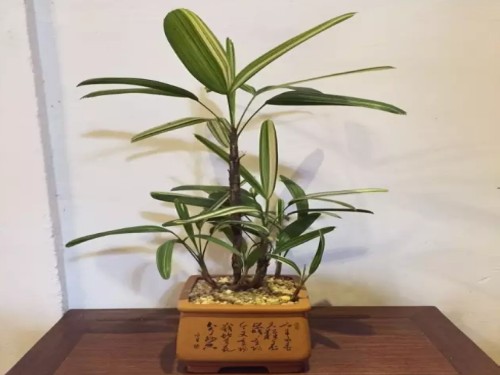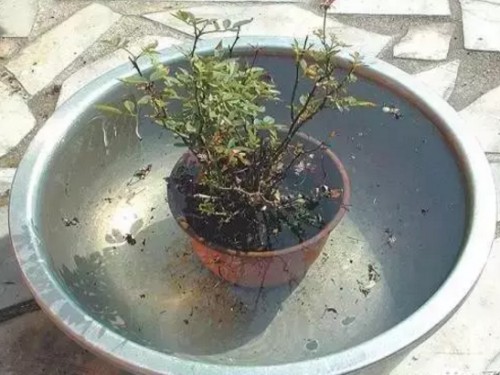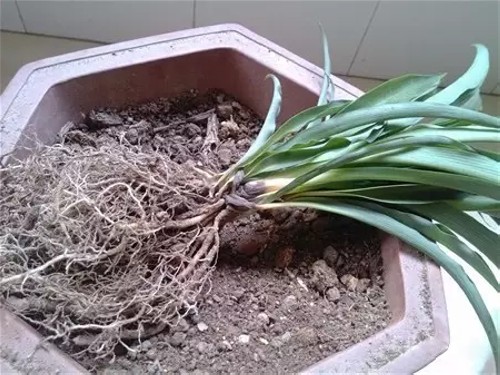What about the bugs growing on bonsai?
Spring is the flower diseases and insect pests multiple period, common diseases and insect pests are: aphids, scale insects, red spiders, blight, rust, powdery mildew and so on. So how do we get rid of those nasty bugs? First of all, let's get to know the following common pests! Hibiscus aphids, peach, hibiscus, rose, honeysuckle, etc. are vulnerable to aphids harm.
Family planting flowers are generally recommended to use some non-toxic, more environmentally friendly methods to prevent pests and diseases, after all, the current life advocates the concept of "green environmental protection", flower cultivation is the same.

Common flower diseases
1. Aphids:
This is the most common pest in flowers. Aphids have many kinds, often clustered in the tender part of the flower body, piercing into the flower body with piercing mouthparts to absorb juice. Aphids harm a wide range, such as chrysanthemum, tricolor Mo, dahlia, rose and so on. Aphids in the process of life, the discharge contains honey dew, but also for the reproduction of other harmful microorganisms to provide favorable conditions, causing the leaves to become black, affecting photosynthesis, therefore, aphids found should be eliminated in time.
2. Red Spider:
Individual few, but the harm range is very large, such as chrysanthemum, dahlia, rose azalea and so on. Because of its small size, this pest should be discovered in time and prevented early.
3. Level Bright Bug:
This kind of pest species are many, feeding habits are very wide, can harm cacti, roses, oleander, osmanthus and other flowers. The secretions of heliopod insects also contain honeydew, which can guide their growth.
4. Whiteflies:
Whiteflies are small individuals, only 1 mm long, white, reproduce quickly, and therefore cause serious harm. Plants damaged by whiteflies can also lead to a large number of harmful microorganisms, making the leaves mildew black.
Second, clever treatment of household potted plant pests (simple and easy to do and pollution-free)
1. Soak tobacco or cigarette butts in water. After the water turns brown, spray the branches and leaves of potted flowers with water to prevent whitefly and aphids; irrigate the basin soil to prevent ants.
2. Put garlic, onion or onion scales into water, soak for 24 hours, filter, spray potted flowers with filtrate 2-3 times, kill red spiders and aphids.
3, dishwashing detergent, according to the ratio of 1:500 prepared into a solution, sprayed on the branches and leaves of potted flowers, can be very effective in killing aphids.
4. Soak plant ash in water for 2 days and spray it on the affected branches and leaves of potted flowers with its clarified solution to kill aphids.
5. Put a little washing powder or soap into clean water, stir it into soap water, smear the branches and leaves of potted flowers with soap water, which can effectively kill aphids, red spiders, scale insects and other pests.
III. Disease control:
1. Potassium permanganate prevents bai fen disease. Spraying potassium permanganate solution with concentration of 0.02~0.03% will gradually disappear after a few days, and the diseased leaves will resume normal growth. 2, vinegar control powdery mildew. Add vinegar to water to prepare 5% solution spray, 2-3 times after the control of powdery mildew.
3, baking soda to control powdery mildew. Baking soda solution is weak acid, pathogenic bacteria in the weak acid environment difficult to survive, therefore, with 0.2% baking soda solution spray on flowers, prevention and control of ** disease effect is good.
4. Garlic juice prevents rot disease. The rotten parts of flowers are scraped off with a knife to expose healthy tissues around the diseased parts, and then garlic juice is evenly applied to the wounds, and each time the interval is one week, 2 to 3 times can be cured.
5. Use iodine to prevent rot. The rotten part of the flower will be completely scraped off, deep xylem, smeared iodine, 7 to 10 days later, and then smeared once, completely cured.
6. Plant ash control root rot. The flowerpot surface soil ** exposed roots, with appropriate amount of plant ash (depending on the size of the flowerpot) covered above the roots, and then covered with soil on the plant ash, control root rot effect is very good, especially narcissus, cactus.
IV. Disease manifestations
1. Diseases occur in branches
It is manifested in phloem and cambium decay of branches, stem rot and ulcer on branches, surface decay of branches, trunk decay, spots on branches, etc. Usually, Bordeaux mixture should be sprayed, stone sulfur mixture should be used, and rotten parts should be scraped off.
2. Leaf diseases
Foliar diseases usually appear yellow-brown or black spots, leaf curl, blight, early defoliation and other symptoms, there may be yellow disease, leaf spot disease, soot disease, powdery mildew and so on. Leaf spot disease can be picked off the diseased leaves and sprayed with Bordeaux mixture; yellow disease can be sprayed with 0.1~0.2 ferrous sulfate solution; powdery mildew can be sprayed with 0.3~0.5 degree sulfur mixture of Baume.
3. Root diseases
Stump potted plant root aging, easy to produce a variety of bacteria, fungi caused by root rot or nodule disease, should pay attention to the disinfection of pot soil and watering control.
Time: 2019-06-01 Click:
- Prev

What if there are ants in the bonsai?
When growing flowers, flower friends may often encounter flowers being damaged by ants, especially potted flowers. So how to control the ants in potted flowers? The following is to introduce several methods to prevent and control ant damage for flower friends. How to control the ants in potted flowers? When growing flowers, flower friends may often encounter flowers being damaged by ants.
- Next

Why do potted orchids rot? What about the rotten roots of hanging orchids?
Cymbidium is a fleshy root, soil culture, hydroponic culture are very beautiful, but once the rotten roots, the whole plant roots absorb nutrients, unhealthy roots will also infect diseases and insect pests. The rotting root of Cymbidium is mainly caused by root injury or waterlogging and excessive fertilization. When changing and dividing the basin, the root must be hurt as little as possible.
Related
- Fuxing push coffee new agricultural production and marketing class: lack of small-scale processing plants
- Jujube rice field leisure farm deep ploughing Yilan for five years to create a space for organic food and play
- Nongyu Farm-A trial of organic papaya for brave women with advanced technology
- Four points for attention in the prevention and control of diseases and insect pests of edible fungi
- How to add nutrient solution to Edible Fungi
- Is there any good way to control edible fungus mites?
- Open Inoculation Technology of Edible Fungi
- Is there any clever way to use fertilizer for edible fungus in winter?
- What agents are used to kill the pathogens of edible fungi in the mushroom shed?
- Rapid drying of Edible Fungi

